
- HI THERE DENIZENS, AND WELCOME BACK!
- Let's get right down to business, here are the Best Monitors for trading
- BEST MONITORS FOR TRADING
- **DISCLAIMER**
- **LEVERAGE TRADING AND THIRD PARTY CUSTODY OF ANY KIND MUST BE APPROACHED WITH EXTEME CAUTION. THE COMPANIES VETTED HERE ARE AS HONORABLE AND TRUSTWORTHY AS THEY COME...BUT THEY'RE STILL THIRD PARTY CUSTODIANS-REMEMBER THAT.**
- How to choose the Best Monitors for trading Crypto and Stocks
- Second,
- BEST MONITORS FOR TRADING
- BEST 5 TRADING MONITORS FOR CRYPTO AND STOCKS
- 1. 49" Odyssey G9 Trading and Gaming Monitor: $1500 US
- overall
- 2. Samsung CHG90 Series 49-Inch Curved Gaming Monitor: $1100 US
- overall
- 3. Dell 27 LED backlit LCD Monitor SE2719H: $300 us
- overall
- 4. LG Ultra Wide 34GP83A-B 34 Inch 21: 9 Curved Day trading Monitor: $700 US
- overall
- 5. HP VH240a 23.8-inch Full HD 1080p: $200 US
- overall
- What to look for in the Best Trading Monitors for Crypto and Stocks
- 10. Space
- Final thoughts on the best monitors for trading
- BEST MONITORS FOR TRADING
- Monitor FAQ's
- Refferences
HI THERE DENIZENS, AND WELCOME BACK!
- HI THERE DENIZENS, AND WELCOME BACK!
- Let's get right down to business, here are the Best Monitors for trading
- BEST MONITORS FOR TRADING
- **DISCLAIMER**
- **LEVERAGE TRADING AND THIRD PARTY CUSTODY OF ANY KIND MUST BE APPROACHED WITH EXTEME CAUTION. THE COMPANIES VETTED HERE ARE AS HONORABLE AND TRUSTWORTHY AS THEY COME...BUT THEY'RE STILL THIRD PARTY CUSTODIANS-REMEMBER THAT.**
- How to choose the Best Monitors for trading Crypto and Stocks
- Second,
- BEST MONITORS FOR TRADING
- BEST 5 TRADING MONITORS FOR CRYPTO AND STOCKS
- 1. 49" Odyssey G9 Trading and Gaming Monitor: $1500 US
- overall
- 2. Samsung CHG90 Series 49-Inch Curved Gaming Monitor: $1100 US
- overall
- 3. Dell 27 LED backlit LCD Monitor SE2719H: $300 us
- overall
- 4. LG Ultra Wide 34GP83A-B 34 Inch 21: 9 Curved Day trading Monitor: $700 US
- overall
- 5. HP VH240a 23.8-inch Full HD 1080p: $200 US
- overall
- What to look for in the Best Trading Monitors for Crypto and Stocks
- 10. Space
- Final thoughts on the best monitors for trading
- BEST MONITORS FOR TRADING
- Monitor FAQ's
- Refferences
Let's get right down to business, here are the Best Monitors for trading
**ALL PRICES ARE IN US DOLLARS, all butons direct you to Amazon.com and all photo and text links send you to Amazon.ca**
**DISCLAIMER**
I am not a Financial Adviser,
This is not financial advice,
But if you want to loose all of your money
There are many of them out there who would suffice.
If you’re looking for knowledge and insight
You’ve come to the right place
I’m not a financial advisor
So you’re money’s in a safe space.
**LEVERAGE TRADING AND THIRD PARTY CUSTODY OF ANY KIND MUST BE APPROACHED WITH EXTEME CAUTION. THE COMPANIES VETTED HERE ARE AS HONORABLE AND TRUSTWORTHY AS THEY COME...BUT THEY'RE STILL THIRD PARTY CUSTODIANS-REMEMBER THAT.**
How to choose the Best Monitors for trading Crypto and Stocks
Your one and only monitor
Is a cheap, old, CRT monitor. It’s been your faithful companion for years, but as you stare at it more and more, you start to notice that its image is becoming blurry.
You try to adjust the angle, but that only makes your computer screen worse. You squint and scrunch up your face, but it’s no use.
What happened?
Back in 1985, this was the best trading monitor money could buy. It wasn’t better than most monitors, it was better than all the monitors.
But alas, trading charts were different back then and you didn’t need a high-resolution monitor with flicker-free technology and blue light filters because higher resolution monitors didn’t exist and screen size wasn’t required to do stock trading with a 20 lb rotary dial telephone.
Finally,
You give up and resign yourself to the fact that it’s time for a new monitor. The screen resolution is terrible (because it can’t be your eye site right?) and the screen size just isn’t meeting your needs anymore.
But you’re not the type to get fooled into losing money rapidly.
Your cheapness has once again paid off, and you’ve managed to snag a monitor for a fraction of the price of the other monitors on the market.
You excitedly bring it home and set it up,
only to realize that the image is fuzzy and the colors are all wrong. You try adjusting the settings, but nothing seems to work.
After an hour of fiddling, you give up in frustration and wonder why you didn’t just spend the extra money on a better monitor in the first place.
If you’re serious
About trading cryptocurrencies or stocks, then you need a good monitor.
Not only do you need a larger screen to see all the information at once, but you also need a high-resolution display so you can see small details.
And if you’re going to be staring at the screen for long periods, you need a decent monitor that won’t strain your eyes.
There are a few things to keep in mind when shopping for a trading monitor. First, size does matter. A 27-inch monitor is going to be much easier on your eyes than a 24-inch monitor.
Second,
The resolution is important for the health of your eyes in the long term. 720-1080p images might be fine for general use, but you’ll want a 1440p or 4K monitor+ for trading.
Third, consider an ultrawide monitor or a few monitors. Ultrawide monitors have a 21:9 aspect ratio, which means they’re much wider than traditional monitors.
This extra width gives you more space to have many windows open side-by-side, which can be incredibly handy when you’re trying to keep an eye on multiple markets at once.
BEST 5 TRADING MONITORS FOR CRYPTO AND STOCKS

PRO'S
Epic real estate for trading with a large 49″ screen
Lightning Fast 1ms Response Times.
Anti glare technology
240Hz refresh rate.
Max resolution of 5120 x 1440 Pixels.
FreeSync tech with Curved VA panel.
CON'S
The most expensive monitor at $1400-1500
overall

The Samsung CHG90 Series 49-Inch Curved Gaming Monitor is premium tech and the perfect choice for traders, gamers, and those who want a more immersive experience. With its fast 2404Hz refresh rates, you’ll be able to take on any game with ease.
It’s clean, sleek and easy to set up, making it an excellent choice for the Trader with a little more gaming experience and money in their pocket. Plus, it can be added to any multi-monitor setup without the need for restructuring your desk or workstation.
The Odyssey G9’s screen is surrounded by a very thin black band flush with the panel, with only a small bezel on the bottom edge, adorned with the Samsung logo in the center. A four-direction control stick and power switch sits on the underside of the monitor, around the right third of the screen.
The back of the monitor is white, a fairly uncommon design choice we’ve also seen in Alienware’s gaming monitors. (The panel would complement one of the white-toned, a.k.a. “Lunar Light,” Alienware desktops or laptops well enough.) It connects to a relatively thin but sturdy V-necked stand that sits on a wide, V-shaped base.
The stand features height adjustment, but because the monitor is so big, it doesn’t allow for any tilt. The Odyssey G9 is an impressive monitor designed specificly as a gaming and trading hybrid. It has excellent picture quality and great response time.
TradingView users will find that it’s one of the best monitors for their purposes too since it doesn’t have any input lag and comes with FreeSync 2 HDR support to reduce screen tearing.
Other than that, it also has great ergonomics with its height adjustment and VESA mount compatibility.
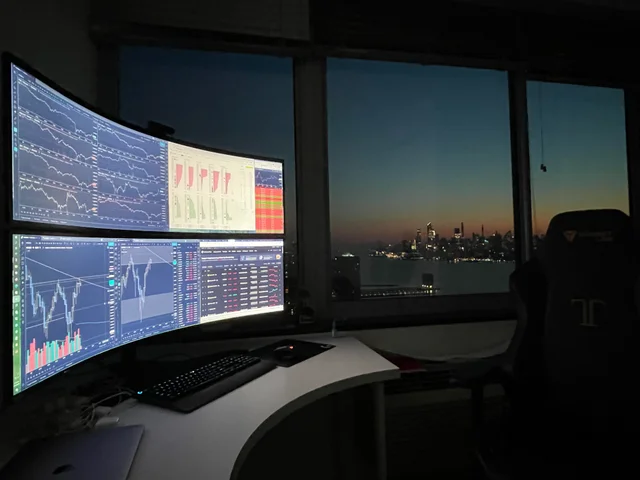
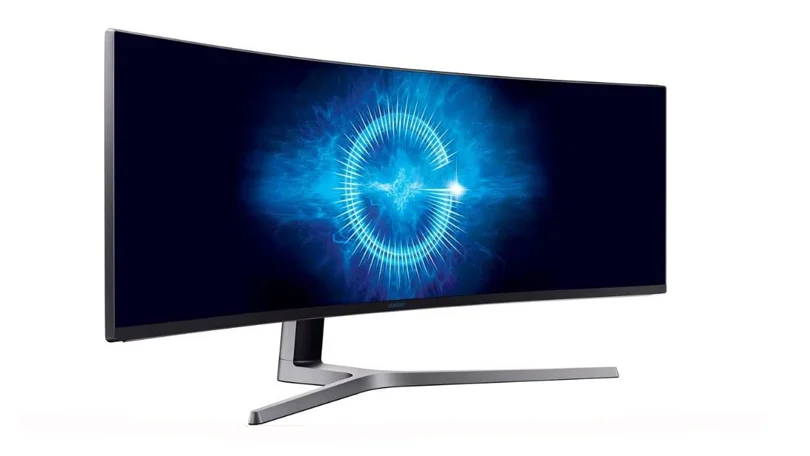
PRO'S
Beautifully curved for immersive trading.
Durable with 7-8 year life span if handled carefully.
Anti glare technology
High dynamic range for eloquent imaging quality.
Enables a simple workspace for trading.
CON'S
At $1100, It can be expensive for many users.
overall
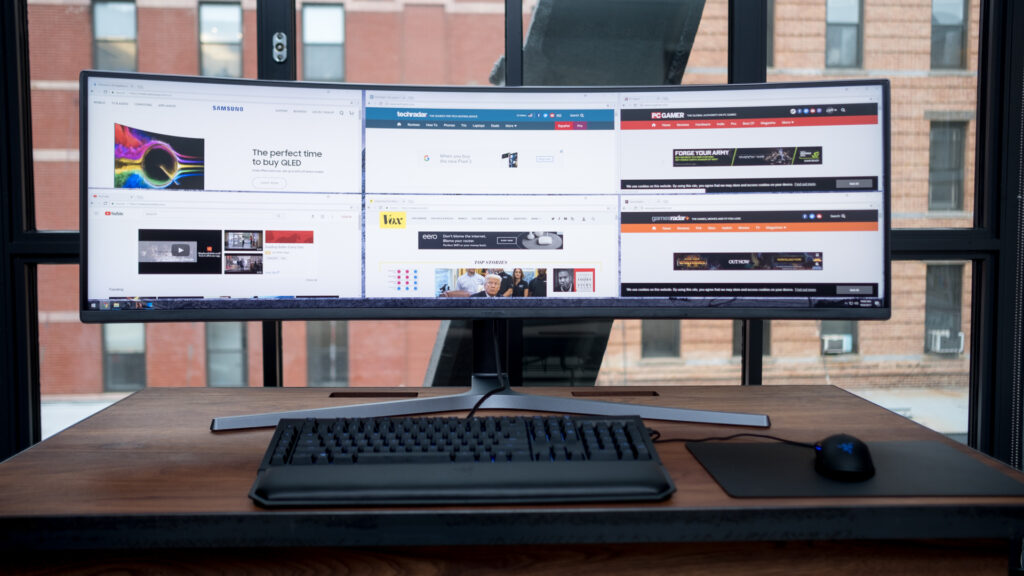
The Samsung CHG90 series 49″ monitor is the perfect choice for traders who love to game!! We need our screen real estate and prefer not to have it interrupted.
This massive monitor is curved, offering an immersive viewing experience. It’s infused with Quantum Dot (QLED) Technology for opulent visuals. The refresh rate is peerless, coming in at 144Hz and 1ms, which decreases ghosting and input lag.
As a trader, you may want to install the apps on your system, which you can do effortlessly. We don’t think that you would need several monitors for your trading deals because this one itself is quite big enough.
A distinct feature in the CHG90 series is the High Dynamic Range (HDR), which enhances colors and contrast for more realistic images. Whether you’re gaming or trading, the Samsung CHG90 series 49″ monitor is the perfect choice for those who need a lot of screen real estate.
This monitor is an excellent choice for trading. It has a generous screen size with some of the best screen resolutions, a high refresh rate, and good connectivity options. For trading purposes, this HD monitor is fantastic
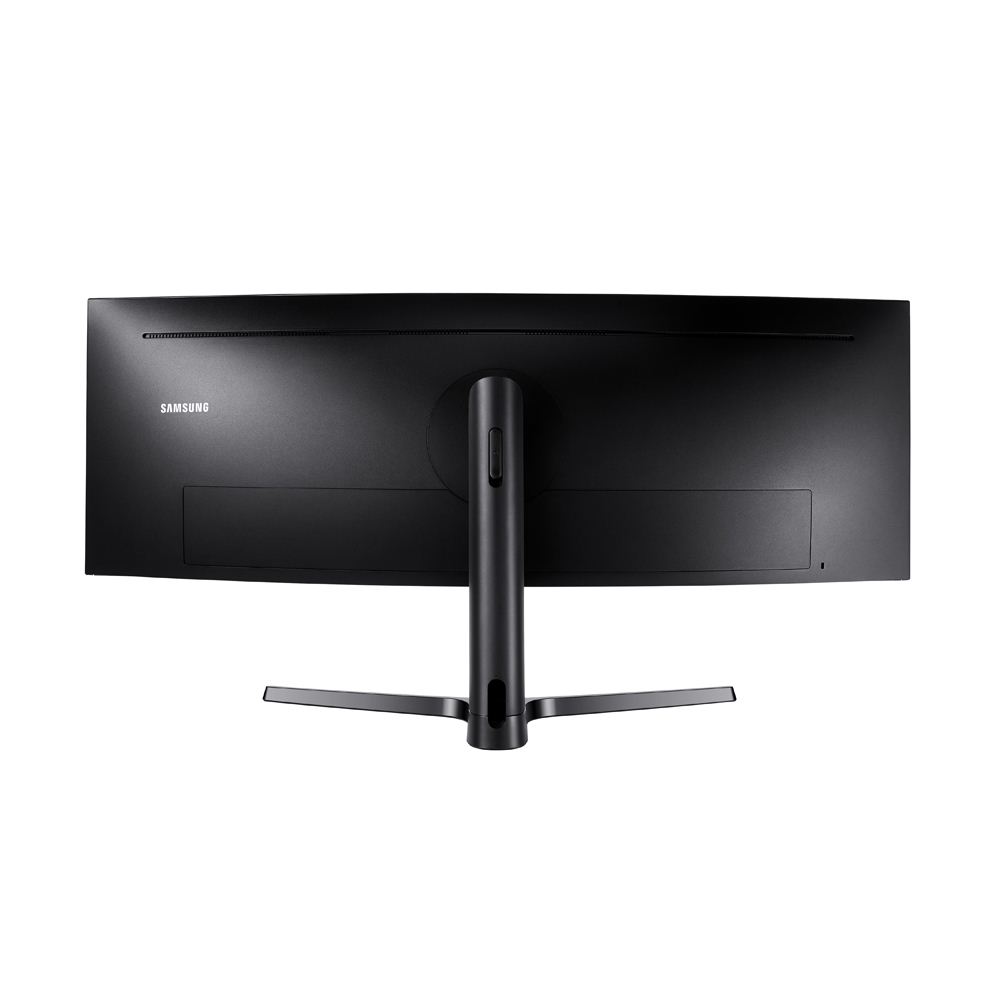
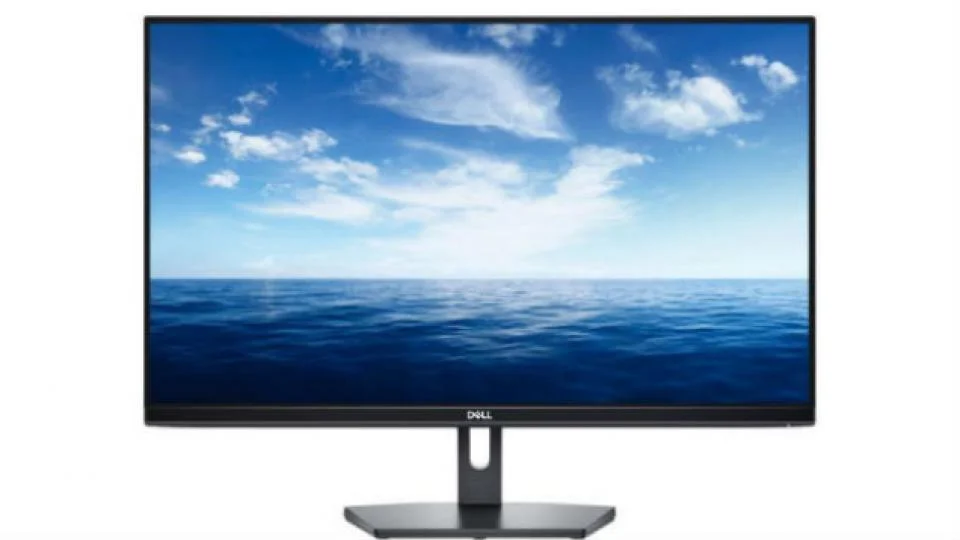
PRO'S
Design is good and lasts for several years.
Adjustable monitor.
Anti glare technology
Color quality is amazing.
Bezel-free with highimage quality.
Affordable and low in price.
CON'S
The ports are hard to access.
overall
The Dell 27 LED backlit LCD Monitor SE2719H is an excellent choice for those who are looking for a high-quality, affordable display. This Dell monitor features a 3-side ultrathin bezel for intense clarity on the screen, as well as a brightness of 300 cd/m² that works sublimely.
Additionally, the Dell 27 LED monitor is a TUV-certified unit that comes with a flicker feature, making it even safer and more reliable. Plus, with its adjustable settings including tilt, comfort, and pivot, you can easily find the perfect viewing angle for your needs.
And thanks to its mount ability, this Dell monitor is perfect for use in both home and office environments. Many users have also appreciated the fact that the Dell 27 LED comes with 16.7 million colors, providing an outstanding viewing experience.
Plus, with its anti-glare monitor coating, you can be sure to view all the colors on the screen with ease. So if you’re looking for an affordable, high-quality display, the Dell 27 LED backlit LCD Monitor SE2719H is an excellent option. Monitor Buying Guide 2019 (Dell P Series Monitors) –
This monitor is a good choice for trading. It has a large anti-glare screen, a high resolution, and good connectivity options.
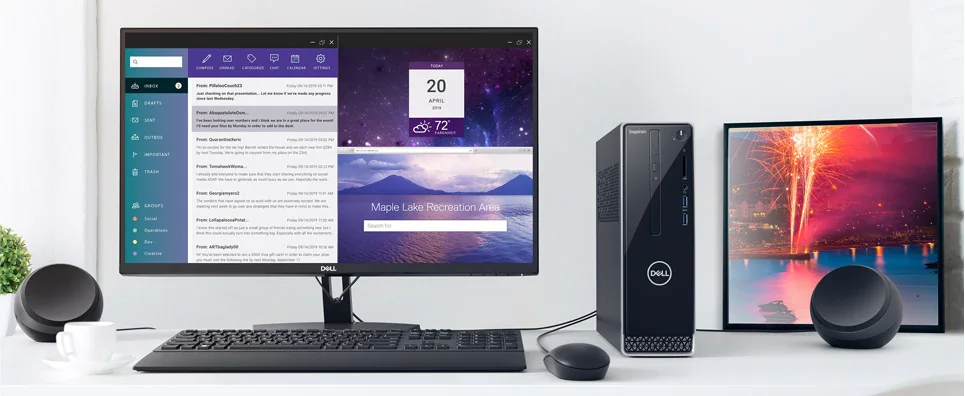
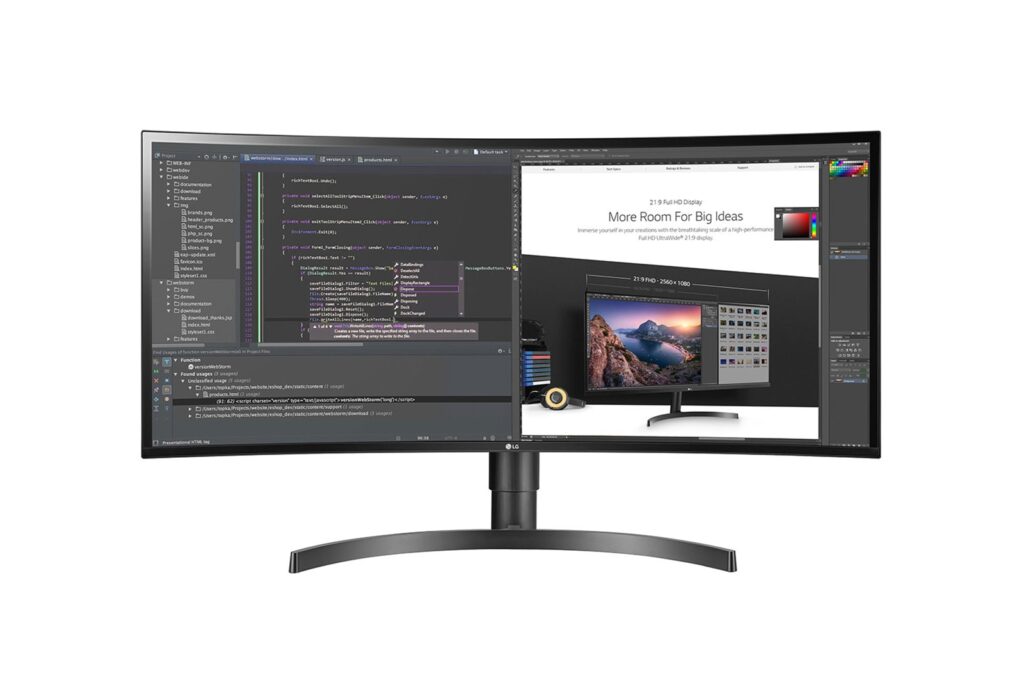
PRO'S
The LG 34” curved monitor is a GAME CHANGER.
No need to have dual monitors.
It will improve productivity.
It is the best 34” curved monitor for trading.
This monitor has a 160Hz refresh rate.
CON'S
pricey, at about $700
overall
The LG 34GP83A-B is a beautiful monitor with thin bezels and an ultra-high resolution. It’s perfect for traders who want the best visual experience possible. The LG 34GP83A-B is an ultra-wide 21: 9 Curved QHD (3440 x 1440) and the best gaming GPU with this monitor.
It features a Nano IPS display for vibrant colors, and it has a refresh rate of up to 160 Hz. The 34” screen G-SYNC tech makes it perfect to use in the best day trading monitor options. LG’s 34BP88-P provides an immersive experience for viewing multiple charts and data at once.
This exceptional monitor also eases eye fatigue with its UltraWide QHD+ (3440 x 1440) resolution and its AMVA panel’s wide viewing angles. The LG 34BP88-P Daytrading Monitor is the perfect addition to any day trader’s toolkit.
LG’s customer service is outstanding, and they will help you with any questions you have about your purchase. They even offer a money-back satisfaction guarantee. So, if you’re looking for the best visual experience possible, look no further than the LG 34GP83A-B!
This monitor is a good choice for trading. It has a very nice big screen, high resolution, and good connectivity options.

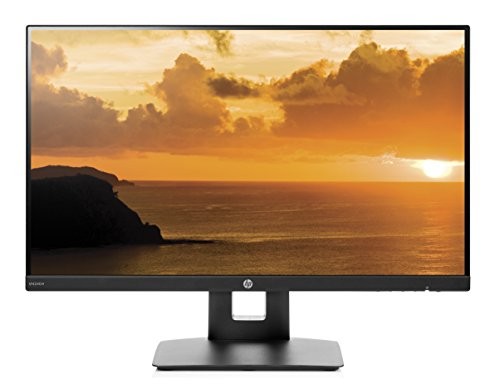
PRO'S
beautiful and efficient design
LED display can be adjusted and tilted
It's very affordable... cheap cheap cheap!!
LED display has a crisp and high resolution
It can be mounted on walls or on a bracket
CON'S
The display is not as impressive as the others on this list
overall
HP’s VH240a is a great option for a trading monitor. It has a wide viewing angle of 178 degrees, making it perfect for viewing charts and images. The high resolution of 1920×1080 also means that you won’t have to worry about losing any detail.
And the anti-glare coating on the screen means that you can stay focused for long periods of time without having to strain your eyes. The height of the monitor can be adjusted, so you can always find the perfect viewing angle.
And if you need to save some space, the VH240a can also be wall-mounted. With all of these features, it’s easy to see why the HP VH240a is one of the best trading monitors on the market.
HP has come out with a new and improved LED light that can be easily mounted on a wall or bracket.
The new HP VH240a 23.8-inch Full HD 1080p LED is lighter and comes with a 100m VESA mounting pattern, making it super easy to mount. If you choose to mount it on a wall, you’ll save desk space and be able to hide wires, preventing the risk of tripping over them.
The HP VH240a also comes with HDM1 and VGA ports, making it simple to connect your LED to a TV or PC. With the VGA cable port, you’ll be able to transfer image signals from your PC to the LED display with ease.
HP has upped its game with this new HP VH240a 23.8-inch Full HD 1080p LED light.
This monitor is a good choice for trading. It has a large screen, a high resolution, and good connectivity options.
the best monitor for the price, a budget monitor ideal for the crypto and stock trader. It allows for plenty of room to grow when you’re ready to up your game and add a separate monitor. Have screens set up in mind you can buy 3 or 4 of these for the same cost as one of our ultra-wide choices
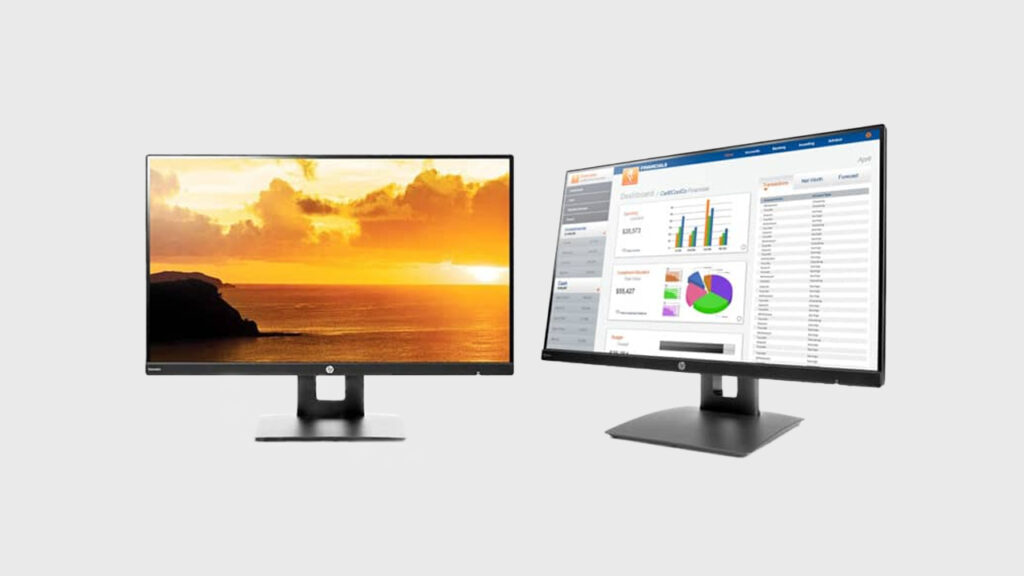
What to look for in the Best Trading Monitors for Crypto and Stocks
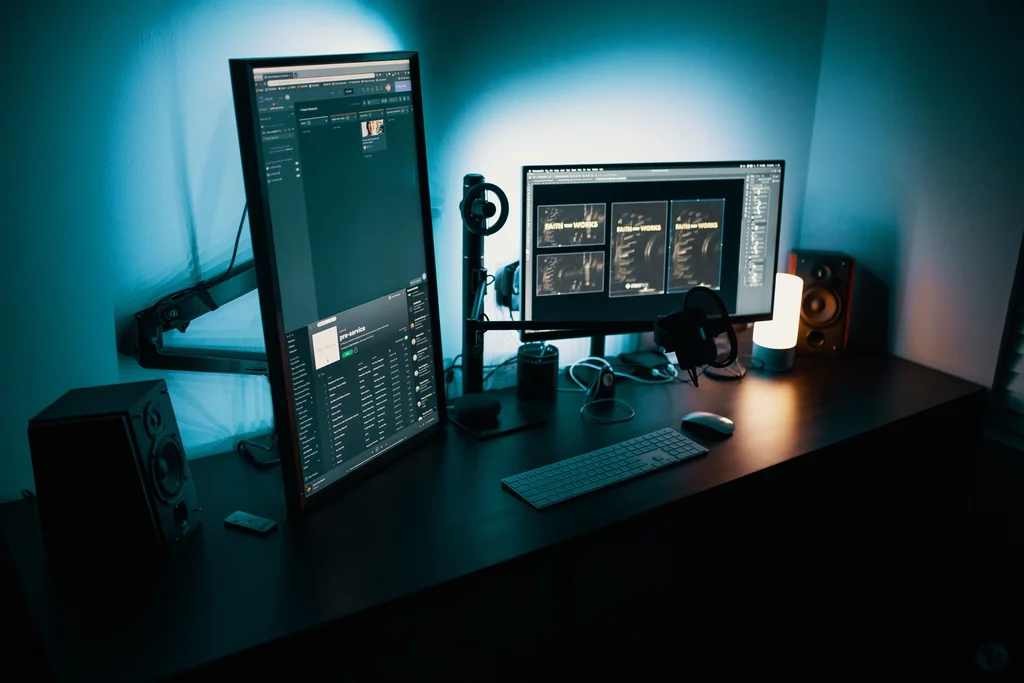
Why do traders need multiple monitors?
Because knowledge is power and a knowledgeable professional enjoys more success. Multiple monitors mean access to different sources of knowledge simultaneously. Having access to more knowledge simultaneously enables you to make timely and accurate trading decisions. That is the benefit of using more than one monitor.
Now imagine that you are using a single monitor for your trading activities. As a trader, you need to constantly analyze price data, track markets, read news, study key metrics, and so on. That means you need to switch between four or five different tabs. It wastes a lot of your time. And unfortunately, you cannot afford to waste even a second in trading. Why so? Because trading is an arena where you can make or lose a fortune in just one second. Your ability to respond in real-time can be the difference between success and failure. Therefore, it makes sense to use multiple monitors so that you can have all the information you need at your fingertips and make split-second decisions without delay.
The answer is simple: because they provide you with immediate access to key information without having to shuffle and fumble around. If you’re a good trader, multiple monitors will definitely up your game. Not only do they empower you to make real-time trading decisions, but they also offer better ergonomic conditions. So if you’re looking to take your trading to the next level, consider investing in a few extra monitors. Your eyes, neck, and head will thank you!
Is a curved monitor good for trading?
Not necessarily. It doesn’t make much difference whether the screen is flat or curved as far as trading is concerned. However, it is also a matter of personal liking and preferences. If a trader likes curved screens, it is good then. Some people say that large screen sizes make charts more precise, enable you to see more details, and put on more individual charts. All these specifications are important. Is a curved monitor good for trading? Not necessarily. It doesn’t make much difference whether the screen is flat or curved as far as trading is concerned. However, it is also a matter of personal liking and preferences. If a trader likes curved screens, it is good then. Some people say that large screen sizes make charts more precise, enable you to see more details, and put on more individual charts. All these specifications are important. Is a curved monitor good for trading? Not necessarily. It doesn’t make much difference whether the screen is flat or curved as far as trading is concerned. However, it is also a matter of personal liking and preferences. If a trader likes curved screens, it is good then. Some people say that large screen sizes make charts more precise
Some people think so, while others don’t really see the benefits. Personally, I think it comes down to preference. If you like the way a curved monitor looks and feels, then go for it! But if you’re just looking for the best specs and features, there are plenty of flat-screen monitors out there that will suit your needs just fine. So ultimately, it’s up to you. Do whatever you think is best for your trading setup. That’s what’s going to help you be successful in the long run. Is a curved screen good for trading? I guess we’ll just have to wait and see! Thanks for reading.
Multiple-monitors vs ultrawide monitors.
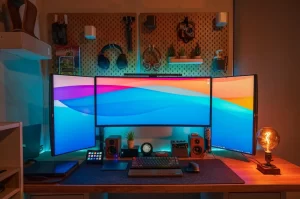
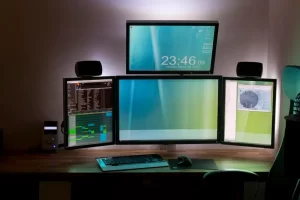
Some say that many monitors give you more screen real estate and allow you to view more information at once. Others say that ultrawide monitors are better because they provide a wider field of view and eliminate the need for bezels in between each monitor.
it’s a question that has been debated by traders for years and I don’t know why. In reality, it’s not a debate, it’s about the use case. What are your requirements? is your monitor space static or do you need part of your pace to adjust or move?
Ultra-wide screens didn’t exist until recently so our only option was the multiple screens set up.
You can argue that, by technological fluke, the multiple screen system is much more advantageous under certain conditions where the distinct separation between many images is beneficial, as the requirement for screens dedicated to one image/graph is necessary;
Maybe you need a number of screens with static images/ graphs or maybe you just need one or more of your screens to have the vertical position.
If this sounds like you, then you are definitely on the epic rockstar level with respect to your requirements and you also have the budget and space.
Keep in mind that the multiple screen system is clunkier, takes up more space, is more costly to run, and is more complex to set up than simply setting up one ultrawide and growing from there.
Remember the ultra-wide has the screen split feature that mimics the classic system.
But which is better for trading?
It depends on your trading style, your trading goals, and what else you plan on using your monitor for.
If you’re a day trader who relies heavily on technical analysis, then multiple monitors might be the way to go. You can have one monitor dedicated to your charts, another monitor for your news feed, and another monitor for your trading platform.
On the other hand, if you’re a swing trader or investor who holds positions for days or weeks, then an ultrawide monitor might be better suited for your needs.
Both have wide fields of view, both can be curved and both can support multiple windows simultaneously.
But if you love to game, and you’re more of a casual trader, the Ultra-wide might be a better solution. But if you find that you spending hours on TA, and you’re immersed in the tradosphere, then the multi-screen may be more suitable.
Regardless of your choice, it’s very clear that field of view can be extremely helpful when you’re trying to spot chart patterns or trends.
And, since there are no bezels in between each monitor, you won’t have to worry about losing any important information that might be displayed on the edge of one monitor.
Why not both?
If you’re looking for the best of both worlds when it comes to monitors for trading, then you should consider getting a multiple monitor setup.
With multiple monitors, you’ll be able to have more than one screen displaying different things at the same time. This can be helpful when you’re trying to keep track of multiple markets or when you’re trying to make sure that you don’t miss any important information.
If you’re looking for the best monitor for trading crypto or stocks, there’s no clear winner. It depends on what else you plan on using your monitor for in addition to trading.
Multi-monitor setups have the advantage of giving you more screen real estate to work with. Ultra-wide monitors, on the other hand, provide a wider field of view that can be helpful for some traders. You may find that you end up using both and have the best of both worlds.
Taking all these factors into consideration, The Crypto medium has sifted through the 100’s of monitors available on the market to find the best out there for your trading needs.
But ultimately, if you find that your setup will have more than four monitors in a multi-screen setup, then why not make life easier for yourself and your integrated cable management system, and grab at least one with more screen space? It doesn’t have to be a massive screen, but it will reduce the number of additional monitors and along with your cable needs.
How do I choose a trading monitor?
Everything that glitters is not gold. The maxim states the ultimate truth. You don’t need to buy a trading screen with a beautiful design. There are certain important factors that you need to consider when planning to buy one of the best trading screens. The following factors are required for a trading monitor to get on the list of the best trading monitors.
1. Size
When you’re trading, you need to be able to see all the information at once. That means you need a large monitor.
A 27-inch monitor is a good size for most people. But if you want an even larger screen, you can get a 29-inch or even a 34-inch monitor.
2. Resolution:
Resolution is the number of pixels that make up the image on your screen. The higher the resolution, the more detail you can see.
For trading, you want a monitor with a high resolution so you can see all the details. A resolution of 2560×1440 is a good choice for most people.
But if you want an even higher resolution, you can get a 4K monitor.
3. Refresh rate:
This rate is the number of times the image on your screen is refreshed per second. The higher the this value is, the more smooth and fluid the image will be.
For trading, you want a monitor with a high refresh rate so you can see the changes in prices quickly. A display rate between 60Hz to 75Hz is more than enough for traders.
The display is better and smoother if the refresh rate is higher but more expensive. A refresh rate of 144 Hz is very good for most people.
But if you want an even higher refresh rate, you can get a monitor with a 240 Hz refresh rate, Again this would be a use case for a graphic design or gaming
4. Connectivity:
When you’re trading, you need to be able to connect to all your devices. That means you need a monitor with good connectivity options. HDMI, DisplayPort, and USB are the most important connectivity options for trading monitors.
5. Contrast ratio
The contrast ratio is a crucial aspect of display quality. It indicates the depths of blacks. A higher contrast ratio means deeper blacks and deeper blacks mean better display quality. Therefore, your trading screen must have a higher contrast ratio, especially if you prefer to work in a dark room.
7. Viewing angle
The viewing angle is the maximum angle where you can still clearly watch the display on a screen. The image quality degrades beyond the viewing angle. Therefore, traders need to have a screen at their disposal that offers a wide viewing angle.
8. Ergonomics
Professional crypto and stock traders who need to use screens for the most part of the day need ergonomic monitors and a very biomechanically conscious et up. They need screens that offer the best ergonomic features.
9. Eyes
The first and most important feature is eye care and minimizing eye strain. High-quality monitors have key features such as screen resolution and eye protection technology that provide the appropriate lighting and cause minimal stress. Similarly, a blue light filter is another good feature for eye protection.
Monitor screens emit blue light which is a type of high-energy light and causes a lot of eye strain as well as adverse effects on sleep. Therefore, a trading screen that offers maximum eye care and protects from blue light suits traders.
Secondly, the design of the monitor also affects comfort during trading. You don’t want to strain your neck and head just like you don’t want to stress your eyes. Therefore, the design of the monitor must be ergonomically best.
Key ergonomic features are height adjustments, pivot, tilt, etc. These features help you in avoiding stress on your eyes, head, and neck. These features bring more efficiency and productivity during trading hours.
10. Space
Do you have a lot of things to keep track of during the day? Do you need more than one monitor to get all your work done?
Well, you’re in luck! You can now buy monitors that come in all sorts of shapes and sizes. From the traditional rectangular shape to more modern, curved designs, there’s a monitor out there that will fit your needs. But beware, with all the different designs comes a whole new set of problems.
For example, how much space do you need to accommodate all those monitors? Do you have enough desk space for all of them? And what about the cables?
There are so many cables! It’s a good thing you’re not a neat freak, otherwise this whole set up would be a disaster.
But seriously, if you need more than one monitor to get your work done, then by all means go for it.
But just be aware of the space requirements and the potential cable management issues that come along with it. Otherwise, you might end up with a desk that looks like a rat’s nest. And nobody wants that.
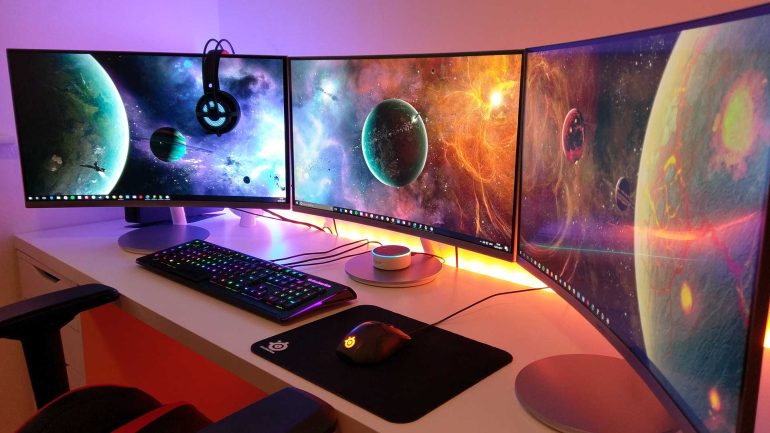
Final thoughts on the best monitors for trading
With so many monitors to choose from, it can be hard to come out feeling that you are getting the best deal. For traders, who want to feel like they are getting their money’s worth, sticking to the fundamentals and looking for eye health options are always a great start. Our favorites are suitable for all budgets and will get you headed on that path, so your head can stay in the markets.


Monitor FAQ's
In 2022, a monitor for trading can cost anywhere from just over $100 to well over $1500, with most settling in around $400. Of note is that recent inflation is making monitor prices go up compared to just a couple of years ago, even when comparing the exact same model. This, combined with an ensuing bear market, should make any trader pay attention to the cost and think about spending money now.
You should probably have at least two monitors for day trading, or an ultrawide with On-Screen sectionings, I own 2 LG Ultrawides. Day traders might also consider getting one of our best portable laptops for when they want the adrenaline rush of swing trades on the go.
You only need 60Hz for day trading, but more will always be better. And also consider what else you are using your screeen for. If its gaming than 60Hz horrible. Also COnsider your eye health. For example, screen flicker issues usually have a lot more behind them than simply refresh rate, after all. The intensity of specs needed for a day trader and a pro gamer just don’t compare.
I recommend the best products through an independent research and review process. I don’t have advertisers, but if I did they would not influence my picks. I may receive compensation in the future once I have them.

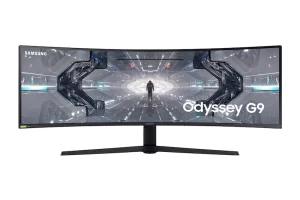
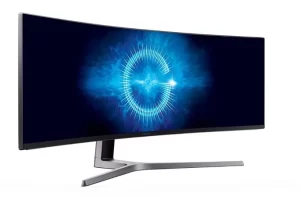

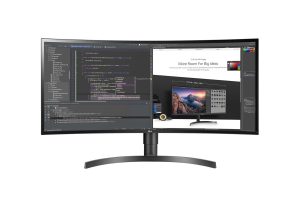

Программа лояльности для покупателей двигателей Cummins – ценим каждого клиента
двигатель cummins отзывы http://www.xn—-1-5cdbjhgmwffymsas5f4j.xn--p1ai .
Your comment is awaiting moderation.